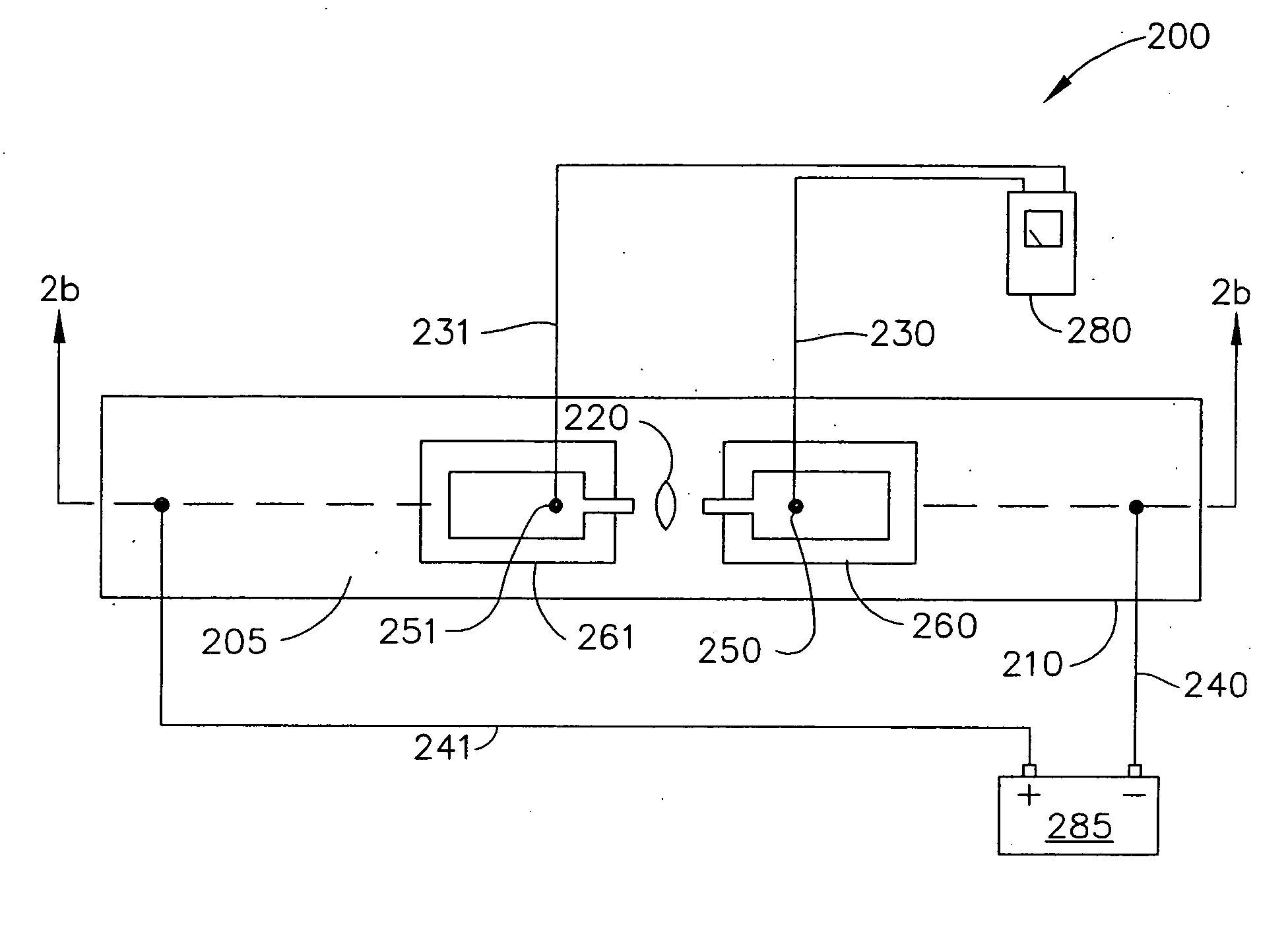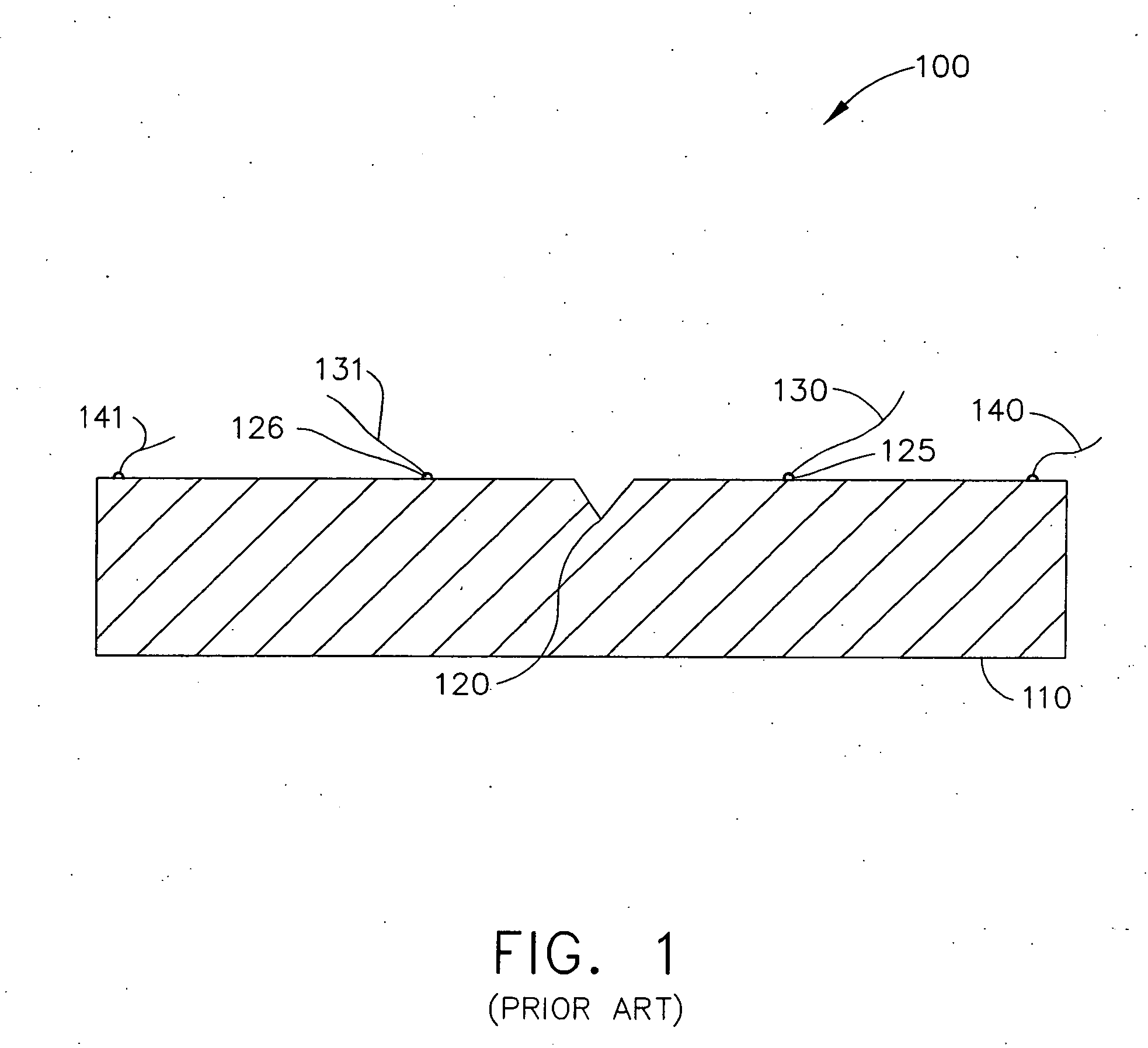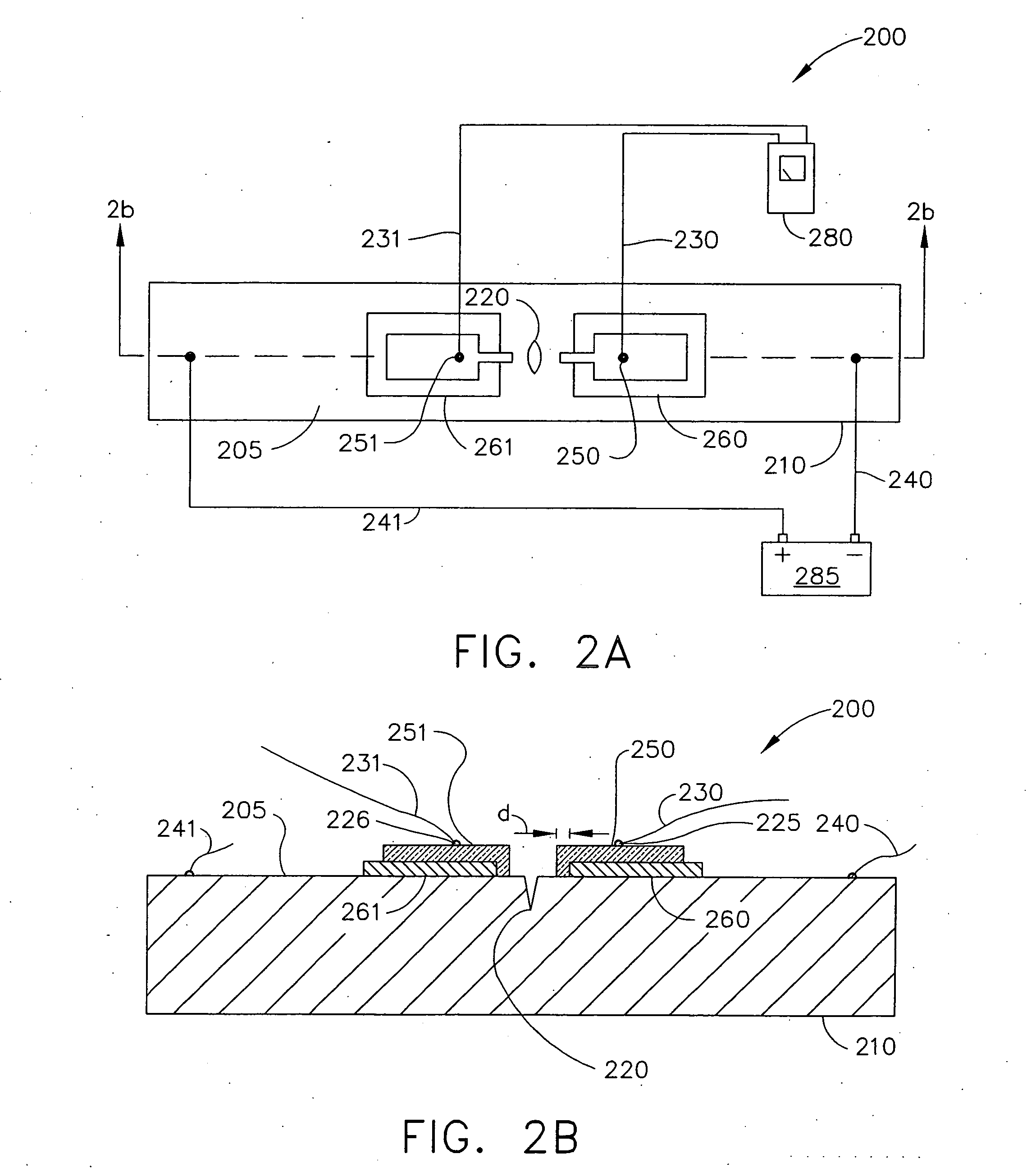Instrumentation and method for monitoring change in electric potential to detect crack growth
a technology of electric potential and measurement method, applied in the direction of instruments, using mechanical means, resistance/reactance/impedence, etc., can solve the problems of cracks developing and propagating, affecting the lifetime of machine components, and invalidating tests, so as to achieve more sensitive measurement of fatigue cracking
- Summary
- Abstract
- Description
- Claims
- Application Information
AI Technical Summary
Benefits of technology
Problems solved by technology
Method used
Image
Examples
Embodiment Construction
[0019] The invention is directed to instrumentation and methods for monitoring electric potential across a predetermined starter crack to detect crack growth of the starter crack in a test specimen that overcomes problems encountered by prior instrumentation and methods. The present invention allows cracks of smaller initial size to be monitored while allowing cracks to be monitored with greater sensitivity, thus measuring smaller growth increments. To overcome the limitations of the prior art and avoid inducing damage to the specimen during preparation, which is a source of limitation seen in the prior art, sensing leads are not attached directly to a test specimen to be studied for crack growth.
[0020] According to exemplary embodiments of the present invention, sensing leads are in electrical contact with the specimen to measure a change in electric potential across the crack via a conductive intermediary in the form of a thin film of conductive material. The conductive material ...
PUM
 Login to View More
Login to View More Abstract
Description
Claims
Application Information
 Login to View More
Login to View More - R&D
- Intellectual Property
- Life Sciences
- Materials
- Tech Scout
- Unparalleled Data Quality
- Higher Quality Content
- 60% Fewer Hallucinations
Browse by: Latest US Patents, China's latest patents, Technical Efficacy Thesaurus, Application Domain, Technology Topic, Popular Technical Reports.
© 2025 PatSnap. All rights reserved.Legal|Privacy policy|Modern Slavery Act Transparency Statement|Sitemap|About US| Contact US: help@patsnap.com



